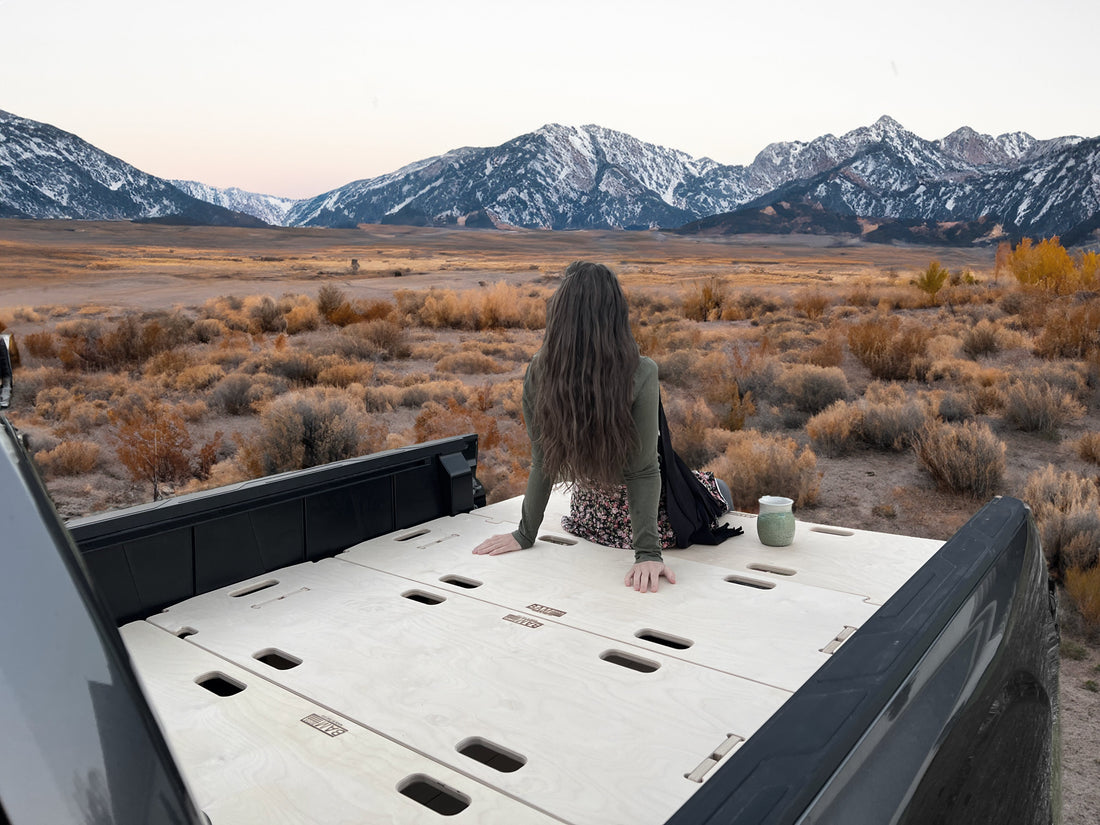
BamBeds VS DIY Bed Platforms
If you're setting up your SUV camping rig or planning a truck bed platform, you've probably debated between building your own or going with a professionally designed system like BamBeds. While DIY might seem like a cost-effective option, factors like durability, space efficiency, and ease of use can make all the difference.
The Challenges of DIY Truck Bed Platforms
Building your own setup means sourcing materials, measuring, cutting, and ensuring stability—especially if you're heading off-road. Many DIY builders start with common, budget-friendly materials, but these often have major drawbacks.
The Problem with Common DIY Materials
A DIY truck bed platform often starts with whatever plywood is cheapest at the hardware store, but not all wood is created equal. Here’s a look at some of the materials commonly used in DIY builds—and why they don’t measure up to the Baltic Birch and Bamboo used in BamBeds:
- OSB (Oriented Strand Board): One of the cheapest options, OSB absorbs moisture easily, making it prone to swelling and warping over time. It also lacks the structural strength needed for a secure, long-term platform.
- Sheathing Plywood: Designed for construction projects, this type of plywood is rough, splinter-prone, and often inconsistent in thickness. It’s not made for furniture-like applications where a smooth, durable surface is essential.
- Red Oak Plywood: While stronger than OSB or sheathing plywood, red oak plywood is still relatively brittle and prone to splintering. It also lacks the stability of multi-layered Baltic Birch, which resists warping and provides a long-lasting foundation.
- Softwood Plywood (Pine, Fir): Cheap and widely available, softwood plywood lacks the density and durability of hardwood plywood. It can flex under load and degrade quickly with repeated use.
In contrast, BamBeds are made from High Grade Birch and Bamboo, offering superior strength, moisture resistance, and longevity without adding unnecessary bulk.
(below is an example of red oak plywood exposed to the elements)

The Hidden Costs of DIY: Tools & Workspace
The upfront cost of plywood is only part of the equation. If you don’t already own the necessary tools, a DIY build requires a significant investment in equipment. Here’s what you’ll likely need:
Essential Tools for a DIY Truck Bed Platform
- Circular Saw or Table Saw: Needed for precise cuts, especially if you want a clean, professional-looking platform.
- Jigsaw: Useful for cutting around wheel wells or other irregular shapes.
- Drill & Impact Driver: Required for drilling in the platform and securing it together.
- Clamps: Helps hold pieces together while assembling.
- Sander: Smooths rough edges and prepares the surface.
- Measuring Tape, Square: Precision is key to getting the fit right.
If you don’t already own these tools, your DIY project could easily cost an additional $500 to $1,500 just in equipment—before you even start building.
Space Requirements for a DIY Build
Building a truck bed platform isn’t something you can do on a small apartment balcony. At minimum, you’ll need:
- A garage or workshop space with a flat, stable work surface.
- Enough room to maneuver full sheets of plywood (typically 4’ x 8’).
- Ventilation for sanding.
- Secure storage to keep your project safe between build sessions.
If you’re working in a cramped space or don’t have a dedicated workshop, a DIY build can quickly become a logistical headache.
Why BamBeds Are a Smarter Choice
BamBeds are designed to maximize space, durability, and convenience—without the hassle of a permanent install. Here’s why they stand out:
1. Superior Materials for Strength & Longevity
BamBeds are crafted from Baltic Birch and Bamboo, offering unmatched durability and resistance to warping. Unlike cheap plywood, these materials provide a flat, robust, and long-lasting platform.

2. Space-Saving Design
Unlike bulky DIY builds that rely on excessive framing or drawer systems, BamBeds keep the space beneath the platform open, maximizing gear storage while maintaining a solid, supportive surface.
3. No Tools, No Sawdust, No Headaches
With a DIY build, you need the right tools, space, and patience to measure and cut everything precisely. BamBeds arrive ready to install no measuring, cutting, or drilling required.

4. Quick to Install & Remove
BamBeds aren’t a permanent fixture. You can install or take them out in minutes, making them perfect for those who need flexibility in their SUV camping setup or truck bed camping platform.
 5. Tailored Fit Without the Guesswork
5. Tailored Fit Without the Guesswork
No need to worry about incorrect measurements or costly mistakes—BamBeds are engineered specifically for your vehicle, ensuring a tailored fit every time.

6. More Time for Adventure
Instead of spending hours designing and assembling a DIY platform, you can be packed up and on the road in no time. BamBeds give you a no-fuss solution, so you can focus on planning your trips.

The Best Choice for Your Setup
For those looking for a practical, efficient, and durable vehicle bed platform, BamBeds offer a better alternative to DIY. You get a setup that’s easy to use, maximizes space, and can be removed whenever needed—without the wasted space or long-term commitment of a permanent build.
Whether you're outfitting your SUV or need a truck bed sleeping platform for your next trip, BamBeds provide the perfect balance of function and convenience. Upgrade your rig with BamBeds and spend more time adventuring, not assembling.

